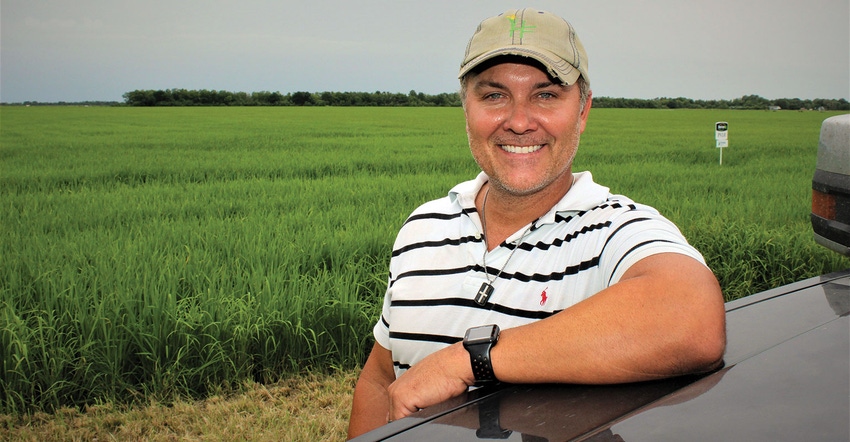
Louisiana rice farmer Ross Hebert believes if he had all the yield in his grain bins he has lost the last 15 years from inaccurate aerial urea applications, he could already be retired.
South Louisiana rice fields are small and, of course, surrounded by levees. When farmers call and request an application of nitrogen be flown on their rice, some of that application ends up on roads and levees.
“When urea ends up on my levees or on roads around my fields, I’m not getting any return on my investment,” says Hebert. “When a pilot puts out a heavy poundage urea application, some of that urea inevitably overlaps.”
A pilot can’t cut off that application to avoid doing that, and two weeks later Hebert would see streaks in his fields where the overlap occurred. “That equates to lost yield and I see it in my yield monitor when I harvest,” says Hebert.
Hebert started applying the nitrogen himself with an airbed or airflow boom applicator. He can get a heavy poundage of urea out in higher winds and be much more precise with his coverage thanks to autotrac and swath control technology on his airflow machine.
The inconsistency of the aerial application also costs Hebert yield on his first rice crop as well as his ratoon crop. “The success of my ratoon harvest is directly related to the success of my first rice harvest,” says Hebert. “Once we harvest our first crop, I’ll spread it with urea, flood it again, and manage it just like the first crop.”
In addition to working 1,100 acres of levee rice, Hebert has 1,500 acres of crawfish ponds. He grows some of his rice as forage for this crawfish. “I plant mostly rice hybrids because they yield so well,” says Hebert. “I did plant Provisia on 150 acres.”
Weedy rice and crawfish
Weedy rice continues to plague many south Louisiana rice farmers. “I’ve been farming rice for 23 years, and this is the worst year I can remember for weedy rice,” says Hebert. “Looking over the countryside around my area, I don’t think any rice farmer can honestly tell you it was less of a problem this year.”
One factor contributing to that problem was record rainfall from June 2018 to the spring of 2019. Farmers could not get into their fields to prep ground.
“When it finally dried out and we were able to, we opened up that ground, let oxygen get to those weedy rice seedbeds, the seeds germinated, and it was over,” says Hebert. “The Provisia system helped me clean up those really bad fields, but I sacrificed yield. I know they’re breeding some more high-yielding varieties, and we need them soon.”
Hebert is on an 80/20 rent with his landlord, and he needs 250-bushel yields to ensure profitability. “I can make 75 to 100 bushels on my ratoon crop about 90 days after I cut my first,” he says. “If I have to delay cutting my ratoon crop past the end of November, that will push my crawfish harvest back, and I just cannot afford to do that because crawfish prices are best early in the season.”
The crawfish harvest was good in 2018 in part because the winter was not as cold. “A hard winter will freeze over my ponds and the crawfish will bury themselves in the mud to stay warm,” says Hebert. “They don’t grow when they’re buried and it takes a while for the water to warm up and get them going again.”
Hebert grows more crawfish than he produces rice because, he says, “…that’s where the money is!”
About the Author(s)
You May Also Like




